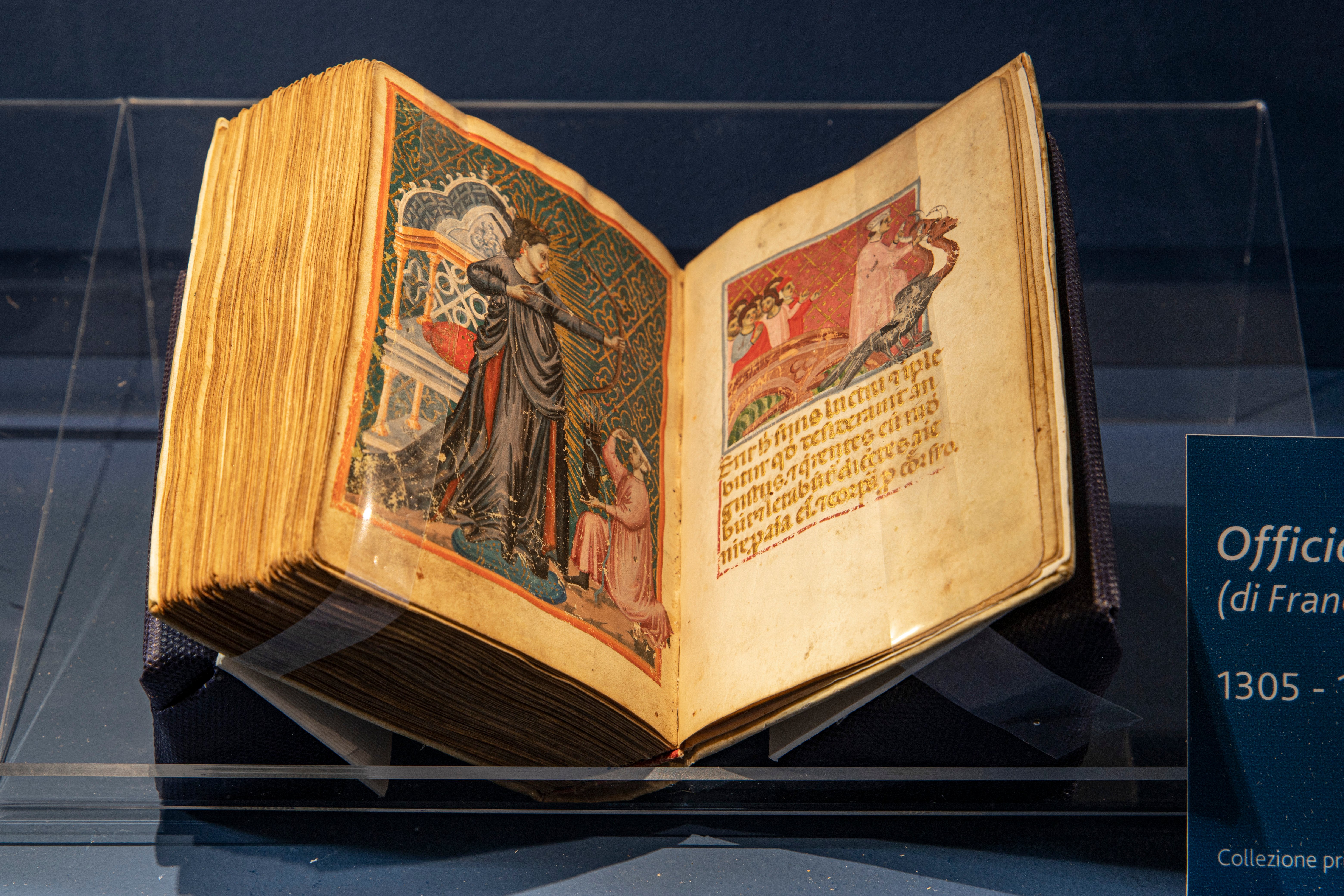
A new art exhibition in Italy takes an oblique look at the life of the poet Dante Alighieri, whose banishment from his native Florence in 1302 serves as the narrative lynchpin of the show.
Dante, who is most famous for writing the Divine Comedy, was a Florentine government official when he was exiled in 1302 by political rivals. Forced to wander the Italian peninsula, he passed through Rome, Verona, and Bologna before finally setting in Ravenna, where he died of malaria in 1321, one year after completing his most famous work.
The exhibition at the Museo d’Arte della Città in Ravenna (“Art in Times of Exile,” through July 4) marks the 700th anniversary of his death and looks at the major artworks Dante may have seen on his travels.
Giuliano di Martino da Rimini’s Triptych with the Coronation of the Virgin, Angels, Saints and Scenes from the Passion of Christ (circa 1315-1320). Credit MAR – Museo d’Arte della città di Ravenna. Rimini, Fondazione Cassa di Risparmio, on deposit at the Museo della Città “Luigi Tonini.”
The show includes works by artists who were revered in Dante’s time, including Cimabue, who is represented by an important mosaic.
Works on view were borrowed from an array of institutions, including the Louvre and the Uffizi Galleries. The latter sent two works: the Stigmata di San Francesco by Maestro della Croce and the Badia Polyptych by Giotto di Bondone.
Other artists in the show include Arnolfo di Cambio, Nicola and Giovanni Pisano, and Giuliano da Rimini, all of whom were known to Dante.
“To think that our wonderful Byzantine mosaics influenced and inspired Dante in writing the last cantos of Paradise arouses great emotion and pride in us,” Ravenna’s mayor, Michele de Pascale, said in a statement.
“Prestigious loans from all over Europe are both expressions of timeless beauty and extraordinary sources for Dante’s inspiration, which informed the greatness of The Comedy and of the entire production of this supreme poet.”
See more images from the show below.
14- Nicola Pisano (1210/20-1278/84), Lunetta con la Deposizione dalla Croce, 1258 circa, Marmo dal portale sinistro del duomo di Lucca, 100 x 173 x 25 cm, (in mostra è esposto il calco in gesso della Direzione Regionale Musei della Toscana – Museo Nazionale di San Matteo, Pisa) Credit MAR – Museo d’Arte della città di Ravenna.
Venetian-Ravenna master from the late 13th-century, Madonna Enthroned with Child. Paris, Musée du Louvre, Département des Sculptures, don. Jean-Charles Davillier. Credit MAR – Museo d’Arte della città di Ravenna.
Maestro di Santa Anastasia, Cristo crocifisso tra la Madonna e San Giovanni. Firenze, Collezione Olivetti Rason. Credit MAR – Museo d’Arte della città di Ravenna.
Arnolfo di Cambio’s Bust of Pope Boniface VIII. On loan from Vatican City, Fabbrica di San Pietro in Vaticano.
Giotto di Bondone’s Polittico di Badia (1295-1297). Installation view. Credit MAR – Museo d’Arte della città di Ravenna.
Giotto di Bondone Polittico di Badia, (detail) (circa 1295-1297). On loan from Uffizi Galleries. Credit MAR – Museo d’Arte della città di Ravenna.